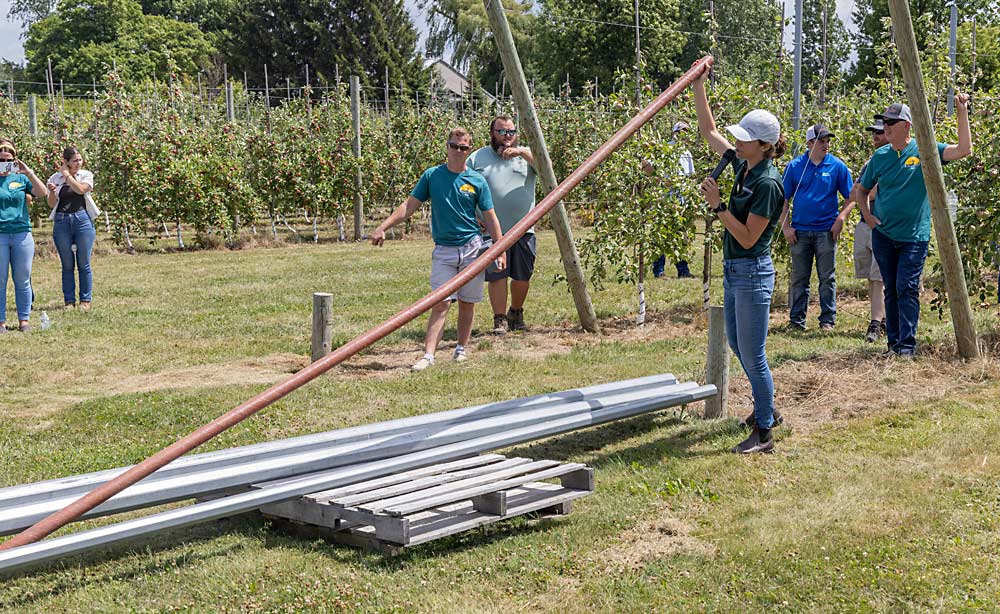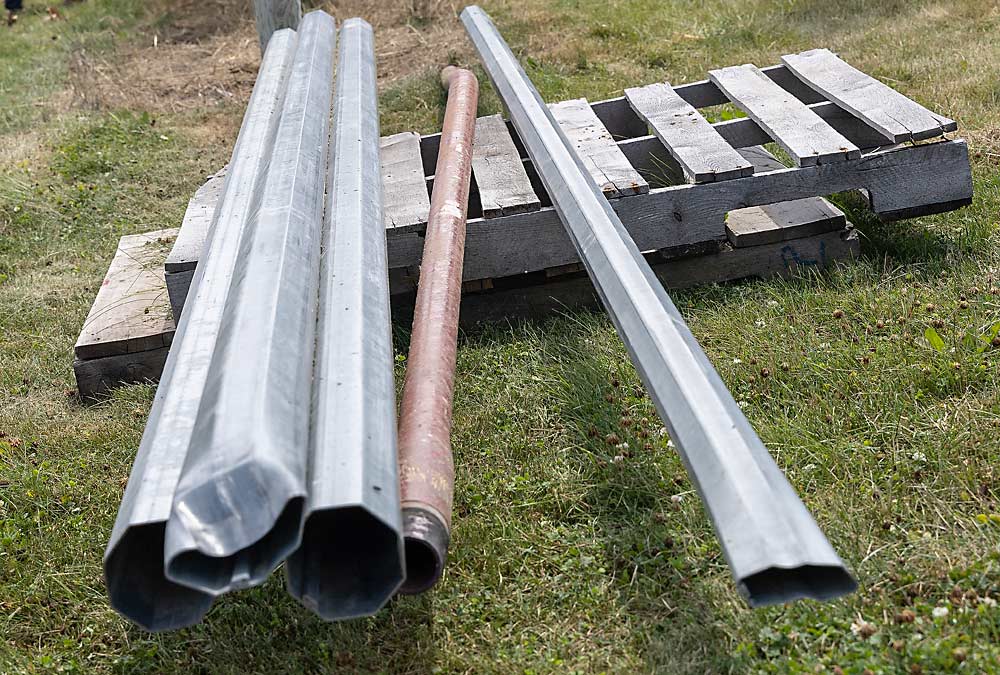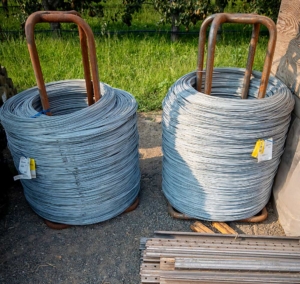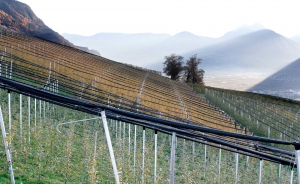
The supply disruptions of the past couple of years have hit wooden orchard posts, too. Prices have increased, and posts are often unavailable or delayed.
Lacking such a fundamental component of their high-density apple trellis systems, some growers haven’t been able to establish new plantings, said Michigan State University apple production specialist Anna Wallis.
Posts made of other materials — plastic, fiberglass, metal or concrete — need more study in an orchard setting, she said. That’s why Wallis and other MSU researchers started studying alternative materials for orchard posts in early 2022.
Wallis discussed the wooden post shortage and potential alternatives at MSU’s Clarksville Research Center in July. She spoke during Ridgefest, the annual summer field day of the Michigan Pomesters.
When planting high-density, trellised blocks, U.S. growers typically opt for treated pine posts, because of the material’s low cost, availability and familiarity, Wallis said.
But much of that pine has been consumed by the construction industry in recent years. That, combined with a shortage of trees and labor, has limited the availability of orchard posts, said Wilbur Hochstetler, owner of Walton Lumber Co. in Millington, Michigan.
Walton Lumber supplies growers in Michigan and New York with treated-pine trellis posts. It was Hochstetler who first approached Wallis about studying alternative materials. He’d been researching other materials himself, especially fiberglass.
The MSU researchers evaluated alternative materials for high-density orchard systems, comparing them to pine. Wallis asked Mark De Kleine, owner of TrellX in Prosser, Washington, to analyze how well the materials would hold up in a high-density orchard trellis system. TrellX also provided steel posts for the project, she said.
The research team installed posts at Clarksville and MSU’s West Central Michigan Research and Extension Center in 2022. At the former, the posts were retrofitted into a 2017 planting of Fuji on Budagovsky 9, spaced 3 feet by 11 feet. At the latter, posts were installed in a new planting of Aztec Fuji on Geneva 11, spaced 2.5 feet by 10 feet. At both locations, posts made of alternative materials were placed within the rows, while most end posts were treated pine, according to Wallis.

At Ridgefest, growers toured the Clarksville block, and Wallis reviewed the materials being studied:
—Treated pine (standard for comparison). Twelve feet long, 6-inch diameter, spaced 25 to 30 feet apart. Posts can be installed with a post pounder or vibrator. Cost in July 2022: 81 cents per row-foot.
—Plastic. Commonly used in fencing, plastic posts were deemed too flexible for orchard applications. They were not included in the research plantings.
—Fiberglass. Repurposed from offshore oil drilling equipment, the suitability of fiberglass posts in an orchard setting is still a question mark. Supplied by Walton Lumber, the 30-foot posts had to be cut in half to work in the orchard. Installation was difficult because the posts tended to bend when pounded in the ground. Fiberglass posts have to be spaced 12 or 16 feet apart, depending on thickness. Cost: 84 cents or $1.40 per row-foot, depending on thickness.
The fiberglass posts seemed to have settled and were stable by July. The researchers will study their performance for the next couple of years. Filling the fiberglass posts with cement, rebar or another material might make them sturdier, Wallis said.
—Metal (steel posts supplied by TrellX). Exceptionally strong, manufactured purposely for trellis systems, but expensive. Available in 65-millimeter and 95-millimeter diameters, with in-row spacings of 9 feet and 29 feet, respectively. Installation can be done by pounding, vibrating, augering or drilling. Cost per row foot is $2.85 for 65 mm or $1.39 for 95 mm, since the thicker posts only need to be installed every 29 feet.
—Concrete. Exceptionally strong and manufactured purposely for trellis systems, but not available for the project due to shipping limitations. Manufactured by Italian company Valente, the posts are prestressed and reinforced with coiled metal. Recommended maximum in-row spacing is 12 feet. Posts are heavy and require specialized lifting equipment.
A team of MSU agricultural engineering students will continue to study the alternative trellis systems, Wallis said.
Hochstetler said concrete posts are common in Europe, which doesn’t have as much readily available wood, and will probably become more common in North America.
Trevor Hardy, a New Hampshire apple grower and owner of Brookdale Farm Suppliers, Valente’s North American distributor, said Valente’s concrete posts are relatively inexpensive on their own, but shipping them across oceans more than doubles their cost.
Hardy thinks concrete is the future of North American orchard trellises, but a concrete post manufacturer needs to be established in Canada or the United States. There are companies looking into doing that, but such production is years away. So far, Canadian growers are buying more concrete posts than U.S. growers, he said.
Riley Bruce, orchard manager at Chudleigh’s in Ontario, Canada, uses concrete posts from Valente. They cost more but last longer than wooden posts, he said.
“The first person to make concrete posts over here will be busy,” Bruce said.
Other species of wood, such as tamarack and larch, can also work as trellis posts, but they probably won’t last as long as treated pine. Whatever the material, it must be produced in the same amount, at the same strength and at the same price that pine can be produced. Otherwise, growers won’t adopt it on a large scale, Hochstetler said.
“I think the availability of wood will come back in the next couple of years, with the lumber and housing markets slowing,” Hochstetler said. “But long-term, I see the shortage of wood posts as an ongoing issue.”
—by Matt Milkovich








Leave A Comment